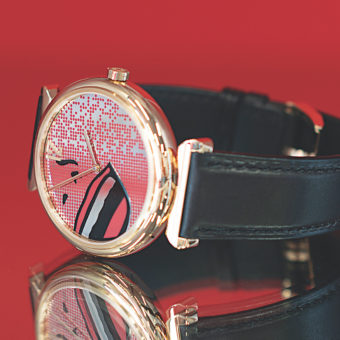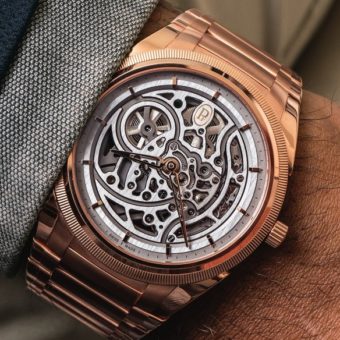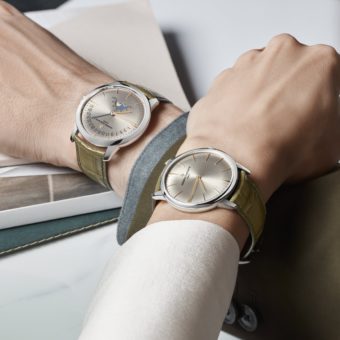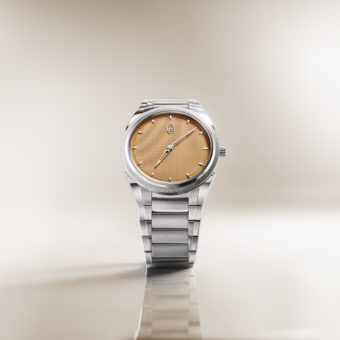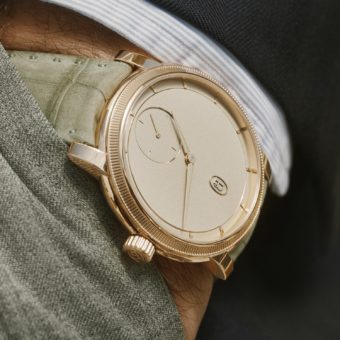While Parmigiani’s horological capabilities are unquestionable, the brand’s recognition among consumers has largely remained static in recent years. To address its place in the global marketplace, executive change was in order. This is where Davide Traxler enters the picture. A watch industry veteran with stints at Bulgari, Chopard, and Corum under his belt, Traxler joined Parmigiani as Chief Commerical Officer in March 2018 before assuming the CEO position in July of that same year. When Traxler visited New York earlier this month, WatchTime had the opportunity to sit with him to find out how his first year at the helm of Parmigiani went and what’s next for the brand.
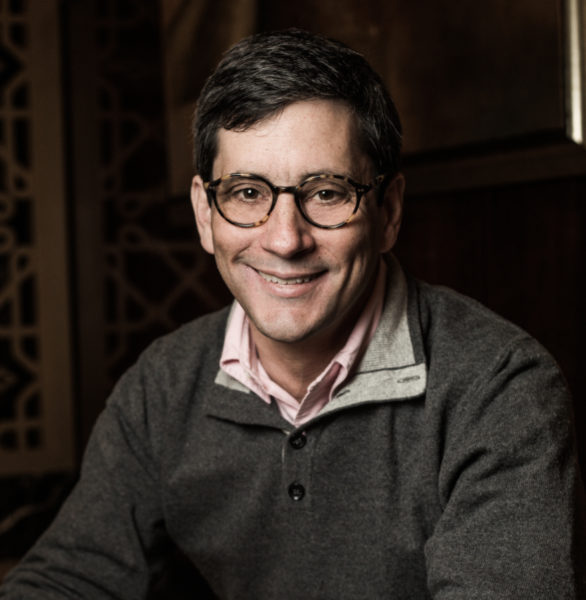
As of this month, you’ve been CEO of Parmigiani for a year. Can you discuss what you’ve learned over the past 12 months? Have there been any surprises, anything that really stands out?
Well, I came in because the stakeholders decided that they wanted to bring the brand toward profitability in a three-year period. It’s a real turn around with the company completely changing its focus. We’re moving resources away from Europe because [the culture] there today is not about celebrating success, so purchases of luxury goods have dwindled. In Asia, of course, this is very important as it is in the United States and Middle East, so we’re moving resources from [Europe] to other areas of the world. That means people, that means investments, that means advertising, event sponsoring, it means everything basically. The other thing is that we’re working on the messaging of the brand. I think in the collections as well as in the [marketing], we aren’t focused enough. That’s where we’re really trying to draw a path where we present and use the collections, focus on what we’re best at, and focus our communication on it.
How has working for a foundation been compared to a typical corporate infrastructure? Is it different than reporting to a board of directors?
Well, actually, one of the changes is that we do now work for a board of directors. We have a very strong board and one of the investments in the foundation [of the company] was to have a strong board. We have one person who was the CEO of Deloitte in Switzerland at one time. We have a gentleman who just retired who ran a large multinational in the chocolate industry and then ran a foundation. So, he’s got the knowledge of international business as well as working with a foundation. And, we just added Daniel Riedo who used to be CEO of Jaeger-LeCoultre and before that he was in production at Tudor and Rolex. He has an industrial background and a brand background. That’s the board and it is helping hugely because they have the knowledge needed to succeed.
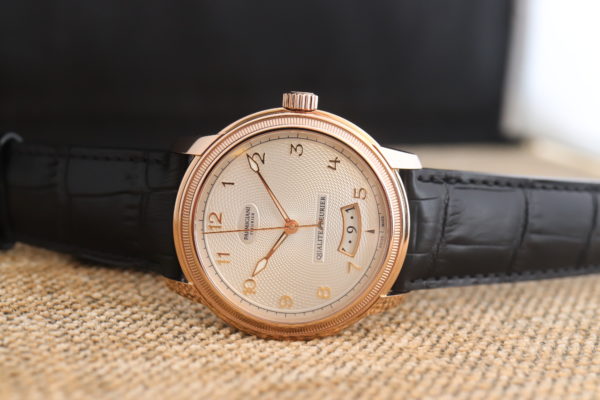
How involved is Michel [Parmigiani] in the day-to-day operations?
Michel is very present. He’s in the office every day. But, it’s a lot more about the philosophy of the brand. Why everything is here and the longterm view. He’s not operational. He is president of the board and so on, but he’s present, he’s there every day.
How often do you yourself find yourself visiting the various Parmigiani manufacturing sites such as Atokalpa, Elwin, etc.?
Well, we had a meeting last week with all the CEOs of the different companies because we were laying out our three-year plan with them. I pretty regularly visit each of the other companies.
Going back to your first answer, how important is the U.S. to the future of Parmigiani?
It’s one of our three focus markets. It’s market number two after Asia. It’s a mature market, but at the same time, it’s a market that does celebrate success. It has a clientele that can be difficult and expect a lot. And, so that’s exactly what you want as a challenging, mature market where you can prove yourself. Nothing’s easy. If you get it right, you get it right properly. You have to measure yourself with a U.S. marker.
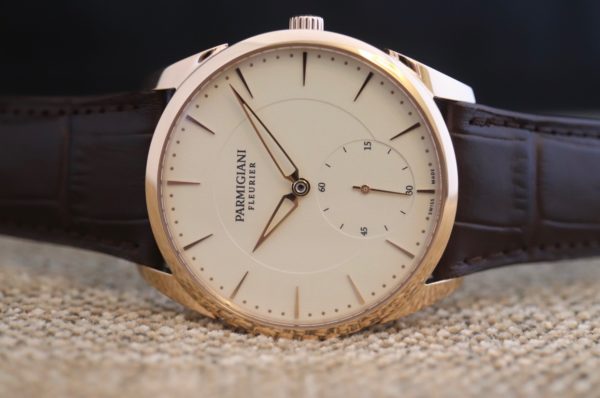
Will you be opening new retail doors?
We don’t want to be retailers. I personally don’t believe in mono-brand boutiques. I think I’m the only one left who doesn’t believe in them, but I really don’t believe it’s the best choice for the consumer. I think a consumer is not faithful to one brand. A consumer has a life span in which he matures from what he likes today, what he likes tomorrow, what his needs are, what he wants for his wife, what his wife wants to buy him, what they want for the children. And, I think the key role of a good retailer is exactly that. Of guiding, introducing novelties, explaining what’s up, what’s down, what’s interesting. And, that’s why I think in our trade, a good retailer is key to the health of the business. I do not see us expanding our mono-brand retailing. I don’t believe it’s the right choice.
Does that speak to the health of the Parmigiani boutique in the Miami Design District? It’s been about three years since it opened.
I don’t think the issue of the Miami boutique is our boutique. I think the mall has had a difficult start. I think they’re catching up a lot. I think, aesthetically, it’s one of the most beautiful malls in the world, but it has to become known. They’re working actively now and I think it’s getting better, but it’s more of a mall issue than a Parmigiani issue.
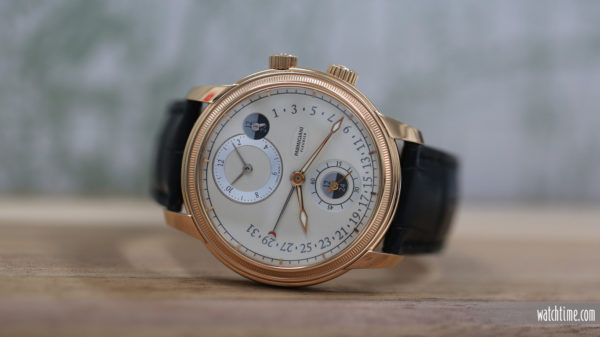
Lots of people have discussed India as a future area of growth for the luxury watch industry thanks to the developing middle-class. Parmigiani just launched in India in February. Can you speak on that a little bit?
I think it’s an interesting market because it’s one of the few markets left that has high entry barriers as far as import taxes are concerned. China, India and South America are three areas of opportunity. If regulations adapt so that the tax rules change in India, it’s going to be huge. For the moment, it’s not. We have a distributor who is, to me, one of the best-in-class distributors in the world. They have an incredible social media team of 40 people. They have four in-house journalists who write their own content. So, the Ethos [boutiques] to me are probably one of the best retailers in the world today. I believe their Instagram page is the largest worldwide for any retailer.
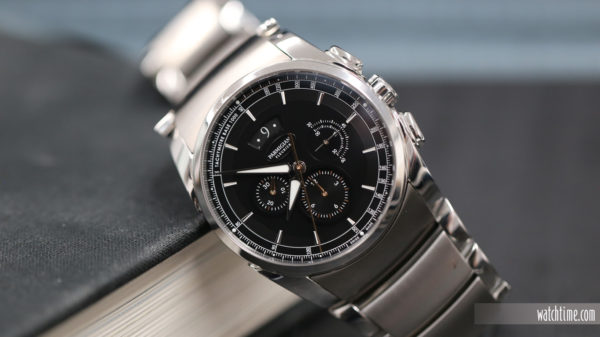
That will be your main retail partner in India?
That is our partner. What’s interesting for us is that we’re in a land of watchmaking, so we’re very good at making watches. But, when you’re talking about social media, the talent available in the [Swiss] valleys is not the same as what you’re going to have in India and New York, or Tokyo and Shanghai. So for us to work with a retailer that has that much experience is huge because it helps us every day to make better content and understand what consumers expect. It’s really a two-way relationship.
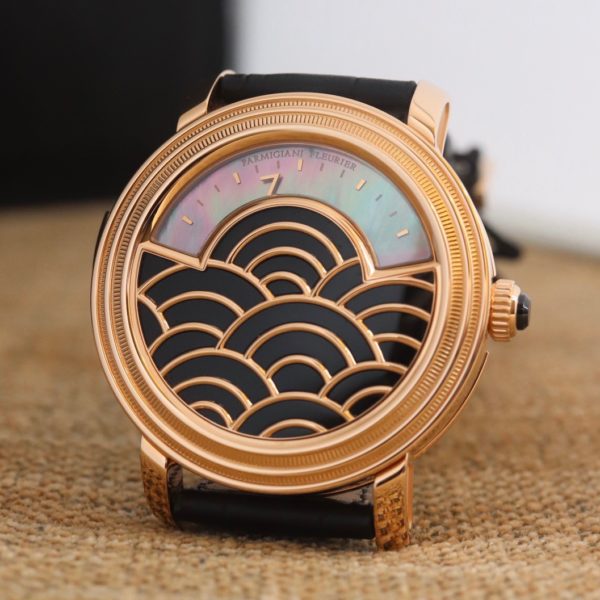
This leads to my next question. You told the Financial Times in May that half of your marketing budget in 2019 will go towards social media. Can you discuss social media and how it will help educate the consumer about Parmigiani? How does Parmigiani use social media?
To start with, there are certain markets that are only available through social media. I would say China is the biggest one. You cannot communicate to a market at that size through local newspapers or billboards, it’s just too big. Obviously, the counterpart is Hong Kong, the biggest watch market in the world, but it’s all within a few miles radius. There you can speak to consumers on print, you can speak to consumers on billboards. You just can’t in China, it’s too big. When 50% of the market is basically digital, 50% of the resources have to be digital. That’s not even a choice anymore. I think all consumers are looking for information today on digital platforms. The purchase can be made anywhere, but the information has to be out there. We have to make sure it is present and relevant. That’s where we’re outsourcing from Switzerland, but not out of the company. We’re moving the creation of content closer to the markets because taking content that we think of in Switzerland and translating it is not what the consumer wants.
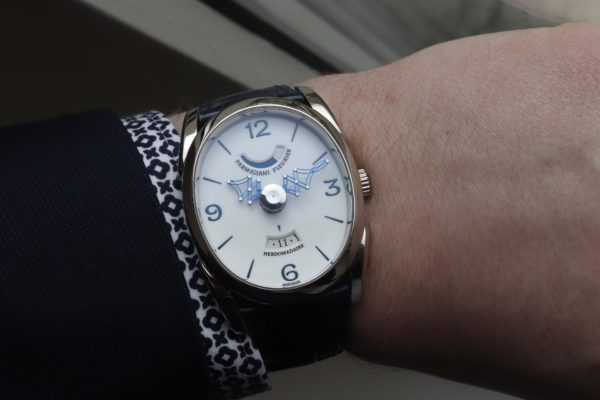
Do you expect that number to grow from 50% in the future to focusing all of your marketing efforts on social media?
I don’t think so. I think there is still a lot of interest in high-quality content coming in any form. I think the forms are evolving. We’re seeing people needing conferences, we’re seeing gatherings, we’re seeing a lot of different ways to communicate to consumers. Social media and digital in general do represent half of it. The other half is shifting from day-to-day. I would not say it’s going to occupy 100%, no.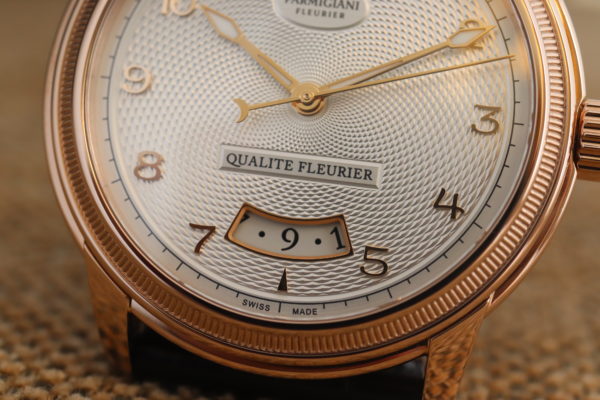
Pivoting slightly — and I understand if you can’t speak on this too much — I’m curious, after over 10 years, the Parmigiani/Bugatti relationship is no more. Was that your decision or was that the end of the contract?
The contract was coming up. It was an easy relationship because the person in charge of branding and licensing for Bugatti used to work with me. We knew each other well and we just decided that both of us had got out of this relationship as much as we could. If we look at Parmigiani and the 370 when it first came out, it was revolutionary, very few watch brands were using such incredible shapes and being so disruptive [back then]. I think it’s opened doors for others to be as disruptive since, and other brands have specialized in that. Today, it’s probably less relevant because of those other brands that are specialized in that. So for us, it was not that interesting to continue on that path and they were looking for a new experience. We shook hands and we’re both happy to part ways. It was a very positive experience.
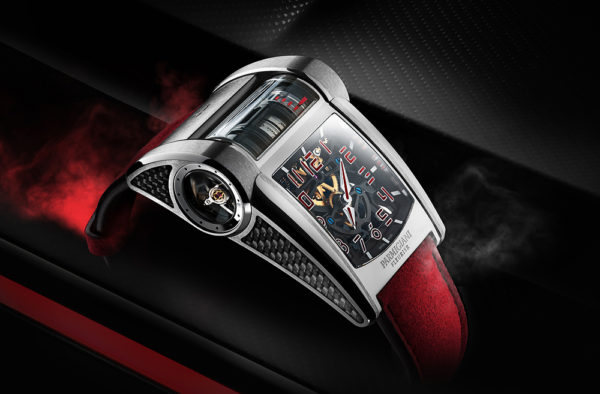
With the Bugatti collection no more, I think it leaves an opening for Parmigiani. Right now there is the Toric, the Kalpa, and the Tonda, and those make up the Parmigiani family. Is there an opening for a fourth collection? Maybe something sportier?
I think sportier is not a choice, [it’s a necessity]. That’s where the market is going. We’ll see if it adapts within one of our collections or if it’s a new collection. It’s also a leap for us because we really present classical watchmaking so we have to build from there. When, and how, the fine-tuning happens, we will see, but yes, within the next few years we will see something in that direction.
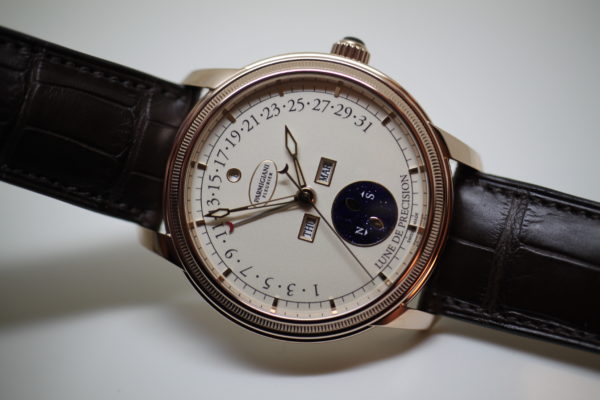
In 2016, Parmigiani released the Senfine Concept Watch with a new kind of escapement that allowed for a 70-day power reserve. I know this was before your time with the brand, but it’s something I’ve been wondering about for a while. Have there been any developments?
There is constant development. We’re currently discussing a new route to reach the result in the sense that there’s one specific challenge that we have not been able to overcome and now we create a new route to try and find another way around it. We are hoping to bring other partners on board to do it together. Parmigiani was started because we wanted to restore anything, any watch or mechanical piece from the past, from any period, from any brand. So it’s kind of this selfless view of maintaining the chronological past. Then we started producing for the goal of anyone that wanted to have access to our know-how, to our skills, to our machinery, to everything we have, they could. And here we come to something groundbreaking, something that could be useful to someone else as well. The whole concept is a selfless concept of being the golden heart of the industry. If this is something we can [complete], we’d like to have another partner in with us because it will be more fun for the industry if everyone’s on board.

